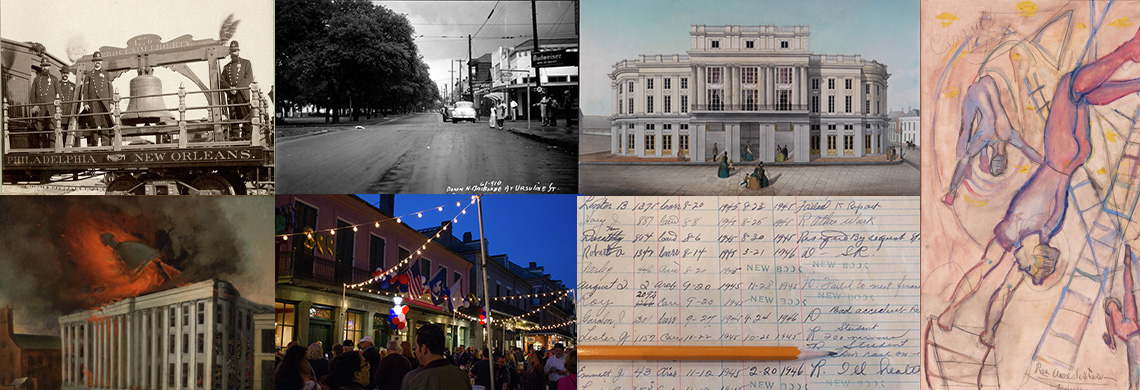Through letters, photographs, and scrapbooks, we learn about the business prospects, educational opportunities, poverty, war, and illnesses that immigrants to the city encountered in the mid-19th century
Before its ruins provided scenery for portions of Beyoncé’s visual album “Lemonade,” HBO’s series “True Detective,” or AMC’s “Into the Badlands,” Fort Macomb was considered a crucial line of defense for New Orleans and the country at large.
A brief history of carnival throws shows the progression of Carnival-related projectiles over the last 150 years.
While perusing the words of 19th-century visitors to New Orleans, it's striking how many of their concerns are still relevant today—and some could fit right into an online comment thread or bitter social media post.
Looking at someone's diaries is typically taboo, but for Malinda Blevins, Kemper Williams's own words helped to connect her with the man who co-founded the institution.
In 1866, at a time when horse racing was arguably the most popular sport in America, the New Orleans Times hailed Abe Hawkins as “probably the best rider on the continent.” Once enslaved on a Louisiana plantation, Hawkins, in just a few years, achieved fame and fortune, and changed the sport forever.
We look back at significant moments and surprises from New Orleans's 300th birthday. Turns out, working around here is pretty cool.
Decorating THNOC's Royal Street properties is a favorite holiday tradition, but the stories behind the trees and ornaments go deeper than one might think.
Generations of New Orleans children still remember how the holidays were ushered in with a familiar tune: “Jingle, Jangle, Jingle / Here Comes Mr. Bingle / With Another Message From Kris Kringle.”
The idea of benevolent slaveholders treating their enslaved workers like family has been persistent since the antebellum period, and, piece by piece, the ads in “Lost Friends” help to set the story straight.




















